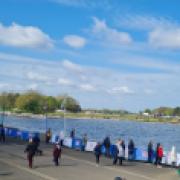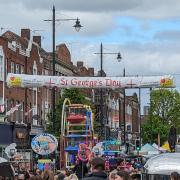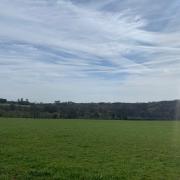
The River Thames acts as a natural barrier between North and South London. It always has been and always will be. So how do they differ and how did their differences come about?
Firstly, North London unarguably has a much better public transport system. The tube, for example, has 250 tube stations, while South London only has 29. This specific gulf can be put down to several reasons, one of which is that North and South London lie upon different surfaces. While North London consists of clay, making it easier to build tube lines on, South London lies upon ‘Lambeth and Thanet Sand,’ making it harder to build deep tunnels in. Furthermore, the tube stations were originally built to connect the termini in London; stations including London Bridge, London Victoria and King’s Cross among others. The tube line was initially built to take traffic off the streets between the stations, and since most of them were north of the river, most of the tube line was too.
A second difference between North and South London, although arguably of lesser importance, is the difference in the quality of football teams. North London has the three well established and frontrunning Premier League teams of Arsenal, Chelsea and Tottenham, with 8 Premier League titles, a UEFA Champions League trophy and 2 UEFA Europa Leagues belonging to North London over the last 30 years. On the other hand, South London’s best football team is undoubtedly the solidly mid-table Crystal Palace, a good Premier League side but not one troubling the sides competing for entry into European competitions, with an all-time best finish of third in the 1990-91 Division One season and a best finish of tenth since that in the 2014-15 season. The next best South London teams are Championship clubs Millwall and Charlton, who are not near the level of the three big North London clubs. The divide is less dramatic but still present in rugby, where the Harlequins, who play at the Twickenham Stoop Stadium, represent South London, while the Saracens play in North London. Whereas the Saracens have won the English Premiership five times and the European Rugby Champions Cup three times, the Harlequins have won the English Premiership only once, and they have won the European Challenge Cup, the second tier of European rugby competition, three times.
Another thing to investigate to differentiate between North and South London are the activities available in the two regions. North London has many notable attractions including the Big Ben, Hyde Park, Wembley Stadium, the Tower of London, Buckingham Palace and the British Museum. In South London, there is the London Dungeon, the Shard, the O2 Arena, Battersea Park, the Crystal Palace Park, the London Eye and the Greenwich Observatory. The largest concentration of attractions is immediately north of the River Thames with further places to visit such as the Tate Britain and Westminster. In general, North London is arguably more historically significant with its museums and historical buildings, while South London is arguably more picturesque with parks and viewpoints.
Having established that North and South London have their stark differences, we return to the second part of the question; how did their differences come about?
Historically, London has always been based north of the river, evidenced by the fact that the City of London borough is situated north of the river, as it was served as the Roman settlement of Londinium. Also, the Anglo-Saxon version, Lundenwic, was also in what is now North London, about a mile to the west of Londinium where Aldwych is now. Meanwhile, South London was a wet and swampy area which did not get developed at the same rate as the North, which was and is where the entire country is governed from. While the North was being built up, the peasants in the South was looked down upon by the upper classes living in North London. Even now, the boroughs with the highest income, Kensington and Chelsea, City of London and Westminster, are all North of the River Thames. Only recently has South London started to be developed, and the gap between North London and South London start to be bridged.
By Adam Shamsul


























